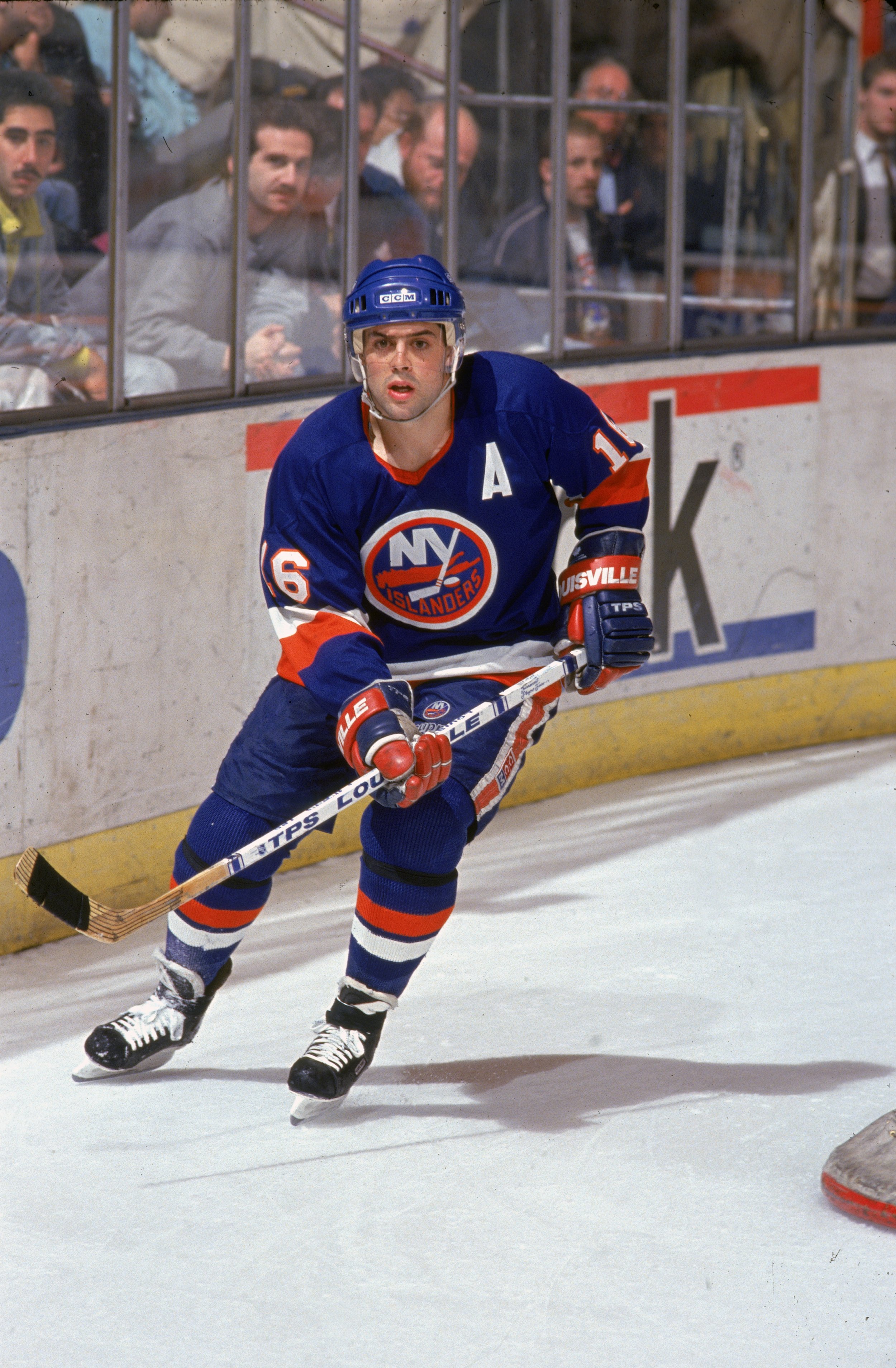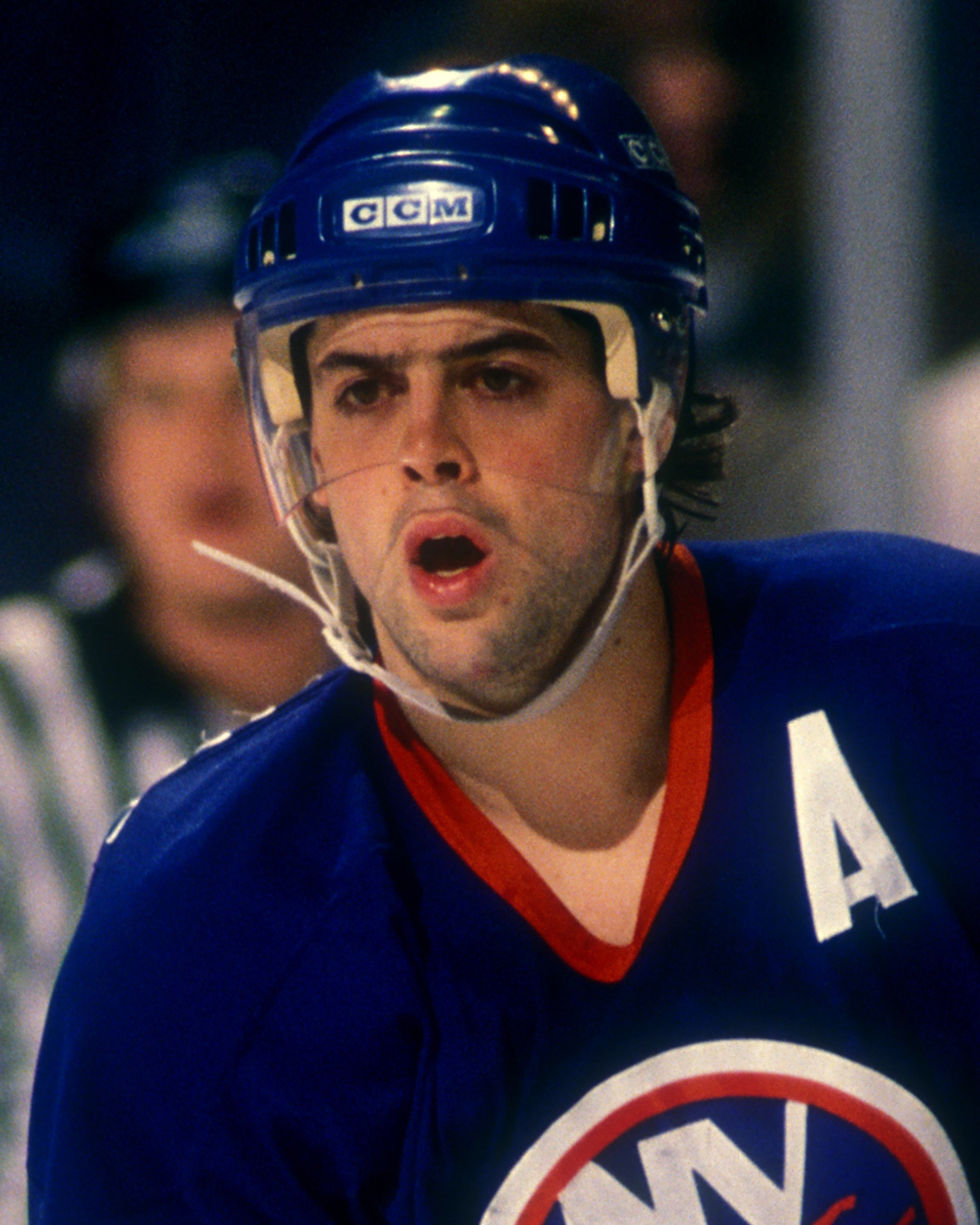Pat Lafontaine
By Stan Fischler
He was one of a kind.
Spectators gasped in admiration as he jetted around the ice like a waterbug on a pond around defenders, flawlessly dishing passes and scoring goals with passion and perfection. Plus, he accomplished his feats with an aura of sportsmanship reminiscent of the first American hockey hero, Hobey Baker.
Pat LaFontaine was an idol of the crowds who jammed Nassau Veterans Memorial Coliseum immediately after the dynastic Stanley Cup years. LaFontaine had an immediate effect and inspired hockey historian Andrew Podniek to write, "Pat's career was nothing short of fantastic."
An adroit trade brought him to Uniondale in a curiously circuitous way. For starters Bill Torrey traded defenseman Bob Lorimer and forward Dave Cameron to the then-Colorado Rockies. The date was October 1, 1981. In return, Torrey obtained Colorado's first-round pick in the 1983 Entry Draft.
By that time the Rockies had metamorphosed into the New Jersey Devils who held the third pick in the player selection. Armed with that pick, Torrey chose LaFontaine, who had won innumerable honors in the Quebec Junior Hockey League.
The essence of his game -- which especially attracted scouts -- was his precision skating, superior stickhandling and a radar-like view of the ice; not unlike that of the iconic Wayne Gretzky.
"Patty turned out to be one of the greatest American-born players of all-time," said Lou Vairo who coached Uncle Sam's entry in the 1984 Olympics. "He was a role model for all the USA Hockey kids who came after him."
Highly-touted before he signed on with the Islanders, LaFontaine moved directly to Uniondale following the '84 Winter Olympics in Sarajevo. Although the Islanders were halted in their "Drive For Five" Stanley Cups in the 1984 Final against Gretzky's Edmonton Oilers, LaFontaine competed favorably against the star-studded eventual Cup-winners.
"We knew Patty was going to be a winner just playing against him in the series," said Oilers defenseman and Hall of Famer Kevin Lowe.
"He more than lived up to his hype," assured historian Podnieks.
As an Islander, LaFontaine scored 50 goals twice, 40 goals five times and 30 goals twice. Even when he wasn't scoring goals or setting them up for teammates he was an impressive figure.
A game in the 1988 playoffs against New Jersey could be marked “exhibit A.”
With his team trailing by a goal against the Devils in the third period, and only 10 seconds remaining, LaFontaine took the faceoff in his own end of the rink.
Remarkably, he not only cleanly won the draw but then bobbed and weaved his way past every New Jersey defender and managed to release his shot with one second remaining on the clock.
"I had to make one of the best saves of my life," said Devils goalie Sean Burke, "but I'll never forget the sight of LaFontaine pulling off that rush."
The goal LaFontaine maintains that he'll never forget took place in the early morning of April 18, 1987 at the Capital Centre. Renowned as the "Easter Epic," it began on the night of April 17th in the seventh game against the Washington Capitals -- winner take all.
The game, tied 2-2 after regulation, extended scoreless into the fourth sudden death period.
"We knew it would be a 'garbage goal,'" LaFontaine said. "It almost always was in playoff overtime."
To the Islanders, there was nothing garbage about LaFontaine's point shot that beat goalie Bob Mason at 8:41 of the fourth sudden-death stanza.
LaFontaine: "What made it so special to me was that I knew that the Islanders had an incredible tradition of winning overtime games,” LaFontaine said. “So, I believed that we were destined to win the game. It's not something I could explain other than that our team had always owned overtime."
But it helps explain why LaFontaine became the first "Post-Dynasty" Islanders NHL Hall of Famer.





